Media
Summary
Once again, we find that dust is the culprit, this time causing a black hole to cast shadows out from the heart of its galaxy. Plus, a fossil galaxy in the Milky Way, newborn jets, and more.
Transcript
This is the Daily Space for today, Tuesday, November 24, 2020. I am your host, Dr. Pamela Gay, and I am here to put science in your brain.
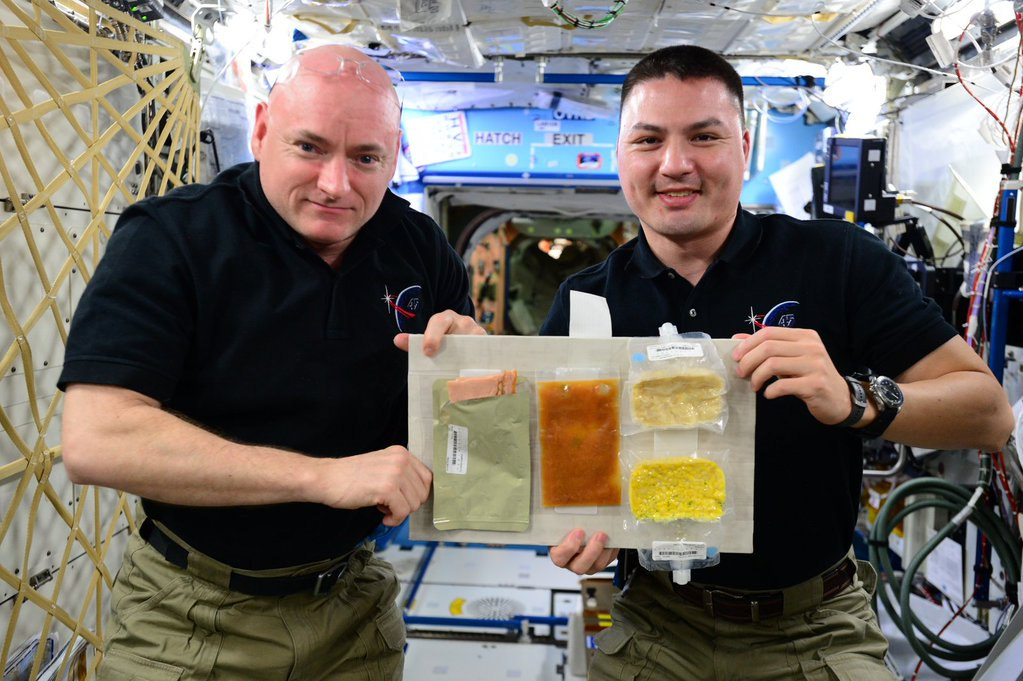
As many of you know, this is a holiday week here in the U.S. Thursday is Thanksgiving and Friday is, well, Black Friday, which means either shopping or hiding from shopping for many of us. For us at CosmoQuest, these days are going to be used for sleeping, playing games with friends, and decorating random real- and virtual- worlds for the upcoming holidays. There will be no Daily Space on either of these days [Ed note: There WILL be Daily Space on Friday.], and we hope that you and yours are finding the best possible ways to stay physically apart and socially together.
Early in the pandemic, people were joking that they’d use the time they were at home to learn new hobbies, develop new skills, and otherwise improve themselves. I have to admit, I’m one of the many who invested in Rosetta Stone and said, “This Year I’m going to try and master a foreign language.” While I will admit my Russian is just as grammatically incorrect as it was at the beginning of the year, there are a lot of folks out there who have found the energy to do some pretty amazing things. One of these people is artist Judy Schmidt who used her 2020 to be part of a pretty awesome study of the galaxy IC 5063.
Back in December 2019, Schmidt – who goes by @SpaceGeck on Twitter – posted a newly processed version of Hubble’s images of IC 5063, commenting: Looking at this new pic of IC 5063 (from Barth’s Prop15444), trying to figure out if I can make a color image… hmm maybe not, but are these cones I’m straining to see real, I wonder? 🤔
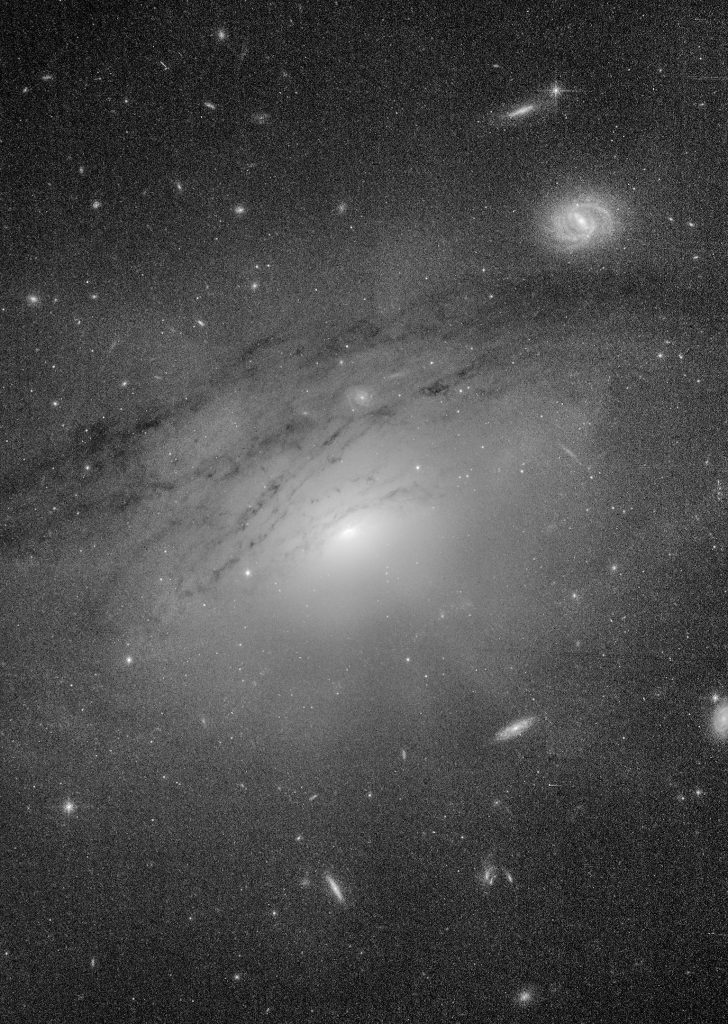
Over a series of tweets, this scientifically knowledgeable artist, who had just set out to make something pretty, described how astronomers have often seen beams of light emerging from dust clouds, but had never seen the cones of shadow that theoretically should also occur.
Professional scientists jumped into the thread, with William Keel pointing out that, “People have looked for crepuscular rays from AGN [active galactic nuclei], as detailed confirmation of how ionization” effects occur. This is a fun thread that we’ll link to in the show notes for this episode that includes the humorous quip from Schmidt that astronomers need “Look no further. Random image processor woman has posted [crepuscular rays] on Twitter. Good game, astronomers. Good game.”
And it was a good game that led to a great collaboration that produced a new paper in The Astronomical Journal that includes Schmidt and Keel as second and third authors, working in collaboration with first author Peter Maksym and a crew of many others.
This work is a reminder that the real difference between being a scientist and a non-scientist is reporting your work. Any of us could go out and quietly discover a new feature in our images or a new comet in our skies, but if we don’t share our work and find people to help us understand it, we aren’t really scientists. The only difference between Judy and I is I paid for ten years of college to get extra letters trailing between my name. We both co-authored one paper this year, and we both explain science on Twitter. Folks, be Judy.
This new paper details how it had long been theorized that light from an AGN passing through the core of a galaxy can be interrupted by clouds of material that cause the light to shine through in beams or to delineate into shadow cones, just like sunlight does when it passes through terrestrial clouds. This probably isn’t a rare occurrence, but it is one that is subtle and hard to see. It took the skills of an artist, trained to enhance details, to tease out what was already in the data archives.

According to lead author Maksym: I’m most excited by the shadow of the torus idea because it’s a really cool effect that I don’t think we’ve seen before in images, although it has been hypothesized. Scientifically, it’s showing us something that is hard—usually impossible—to see directly. We know this phenomenon should happen, but in this case, we can see the effects throughout the galaxy. Knowing more about the geometry of the torus will have implications for anybody trying to understand the behavior of supermassive black holes and their environments. As a galaxy evolves, it is shaped by its central black hole.
To go from detection to publication in less than a year is remarkable for any scientist, and my hat is off to this team that was brought together by Twitter and got their results through peer-review in such a beautiful fashion. I regret that I wasnt following Schmidt, aka @SpaceGeck before, but that mistake has been rectified, and I look forward to seeing what new details she finds to enhance in our Universe.
A remarkable amount of astronomy can be summed up as “we looked in the direction we’d looked in a million times, but we used this new thing – this new instrument, technique, spacecraft – and we discovered that something old and familiar is very different from what we thought.”
Last week we brought you a story on how studies of globular clusters had shown how our Milky Way galaxy has been built up through merger after merger with other galaxies. We also showed how a population of very metal-poor stars in our galaxy’s disk indicated that our entire system had been affected by these mergers. Well, as often seems to happen in astronomy and new TV seasons, we have another story with essentially the same plot line.
The APOGEE spectrograph, which the Sloan Digital Sky Survey (SDSS) used to measure the metalicities of more than half a million stars, has determined there is a blob of stars down in the heart of our galaxy that is all made of roughly the same material and shares related orbits. This seems to indicate that these stars come from a single, massive population that crashed into our system. When I say massive, I mean this population makes up fully one-third of the stars in our galaxy’s spherical halo.
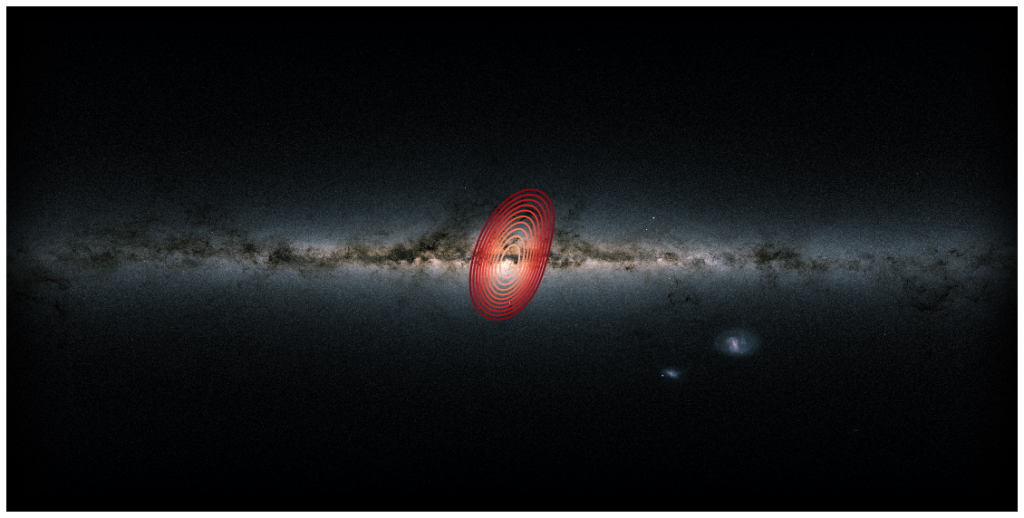
This work is described in a new paper in Monthly Notices of the Royal Astronomical Society (MNRAS) with lead author Danny Horta.
According to team member Ricardo Schiavon: To find a fossil galaxy like this one, we had to look at the detailed chemical makeup and motions of tens of thousands of stars. That is especially hard to do for stars in the center of the Milky Way, because they are hidden from view by clouds of interstellar dust. APOGEE lets us pierce through that dust and see deeper into the heart of the Milky Way than ever before.”
As we develop more and more telescopes working in these longer, dust penetrating wavelengths, and as our data on stellar motions improves, we’re probably going to discover more and more of these chemically and kinematically linked star populations. This will essentially allow us to unmix our galaxy’s stars and see just what we’re made of, and I can’t wait to learn more about its remarkable mixing pot history.
Galaxies change at every possible timescale. From the billion year-long slow mergers of massive systems to the minute-to-minute flickers of active galactic nuclei, they are always changing in a myriad of different ways.
In a startling-to-me story from radio astronomy, the new Very Large Array Sky Survey (VLASS) catalog of radio galaxies is allowing astronomers to see galactic jets turning on. VLASS is working to map 80% of the sky. This kind of survey was done at a smaller scale twenty-some-odd years ago with the VLA FIRST, or Faint Images of the Radio Sky at Twenty centimeters, survey. The similarities in data quality of these two surveys and their separation in time means astronomers can search through the data for objects that have changed in those twenty years, and, remarkably, it turns out that roughly 2000 galaxies appear in VLASS that weren’t in FIRST.
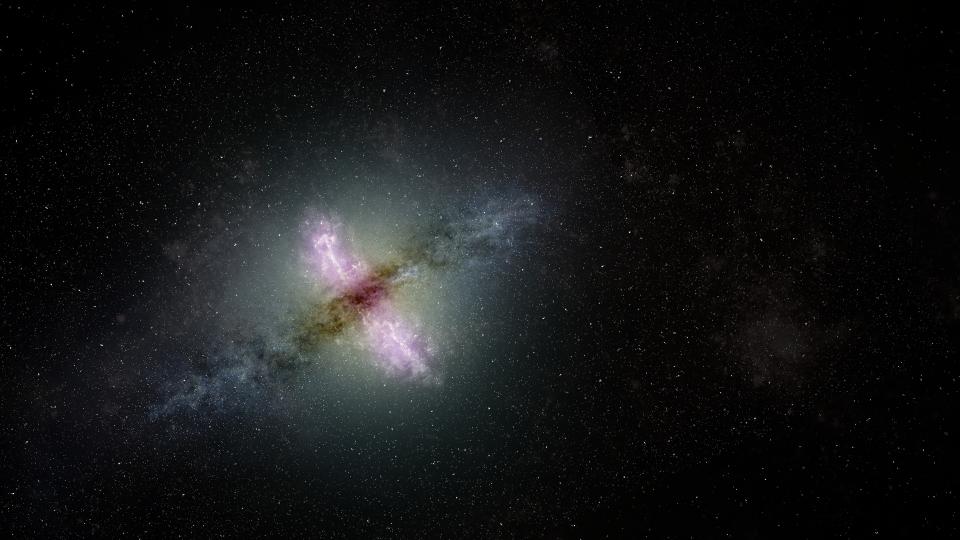
Initial follow-up observations of fourteen of these objects found that these systems were AGN lighting up and sending out new jets of material.
According to Kristina Nyland, the lead author of this new study which appears in The Astrophysical Journal: Jets like these can strongly affect the growth and evolution of their galaxies, but we still don’t understand all of the details. Catching newborn jets with surveys like VLASS provides a measure of the role of powerful radio jets in shaping the lives of the galaxies over billions of years.
People often talk about how the universe doesn’t do things on timescales humans can see, but it turns out that sometimes we can get lucky and catch the start or finish of the civilization spanning activities.
As giving season approaches for so many traditions, both old and manufactured, approaches us like an oncoming train, I suspect many of you are eyeing telescopes and cameras as possible purchases. I have to admit, if you don’t already have a DSLR camera you can use for basic sky or astrophotography, there is an event coming up in December that may help justify such a purpose. On December 21st, Jupiter and Saturn will gather together on the sky, and hang just a few arcminutes apart. This means that through even most telescopes, both worlds will appear in a single field of view.
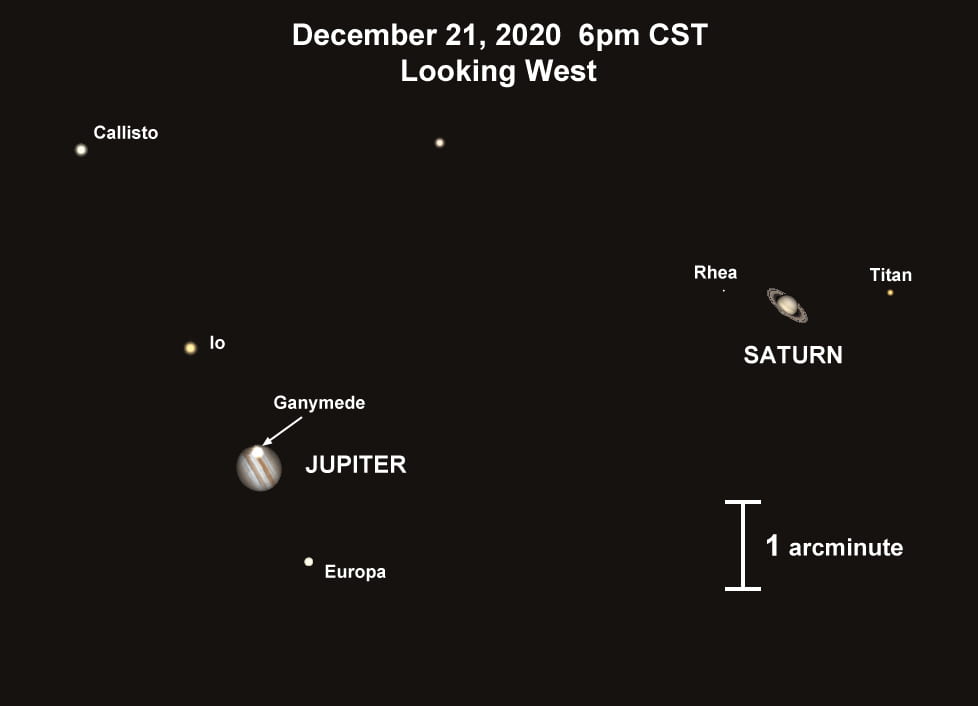
I, for one, am going to dust off my telescope and see what I can do to get the cranky drive software to like me again in preparation to go out and look at this cool combination of worlds. We’ve got less then a month to practice, people. But we can do this – we can prepare ourselves for the astrophotograph not just of a lifetime but of nearly a millenium. This kind of alignment last occurred in 1226!
If you are looking to purchase equipment, we have a relationship with OPT, and your purchases will benefit CosmoQuest if you go through our affiliate link. You can learn more on our website, DailySpace.org.
This has been the Daily Space.
Learn More
Hubble Catches Possible “Shadow Play” of Disk Around Black Hole
- Space Telescope Science Institute press release
- Center for Astrophysics | Harvard & Smithsonian press release
- “Crepuscular Rays from the Highly Inclined Active Galactic Nucleus in IC 5063,” W. P. Maksym et al., 2020 Oct. 8, Astrophysical Journal Letters (preprint on arxiv.org)
“Fossil Galaxy” Discovered Buried Deep Within the Milky Way
- SDSS press release
- “Evidence from APOGEE for the Presence of a Major Building Block of the Halo Buried in the Inner Galaxy,” Danny Horta et al., 2020 Nov. 20, Monthly Notices of the Royal Astronomical Society (preprint on arxiv.org)
VLA Sky Survey Reveals Newborn Jets in Distant Galaxies
- National Radio Astronomy Observatory press release
- “Quasars That Have Transitioned from Radio-Quiet to Radio-Loud on Decadal Timescales Revealed by VLASS and FIRST,” Kristina Nyland et al., 2020, to appear in the Astrophysical Journal (preprint on arxiv.org)
Worlds Will Align Christmas Week for Spectacular Heavenly Sight
Credits
Written by Pamela Gay
Hosted by Pamela Gay
Audio and Video Editing by Ally Pelphrey
Content Editing by Beth Johnson
Intro and Outro music by Kevin MacLeod, https://incompetech.com/music/


 We record most shows live, on Twitch. Follow us today to get alerts when we go live.
We record most shows live, on Twitch. Follow us today to get alerts when we go live.